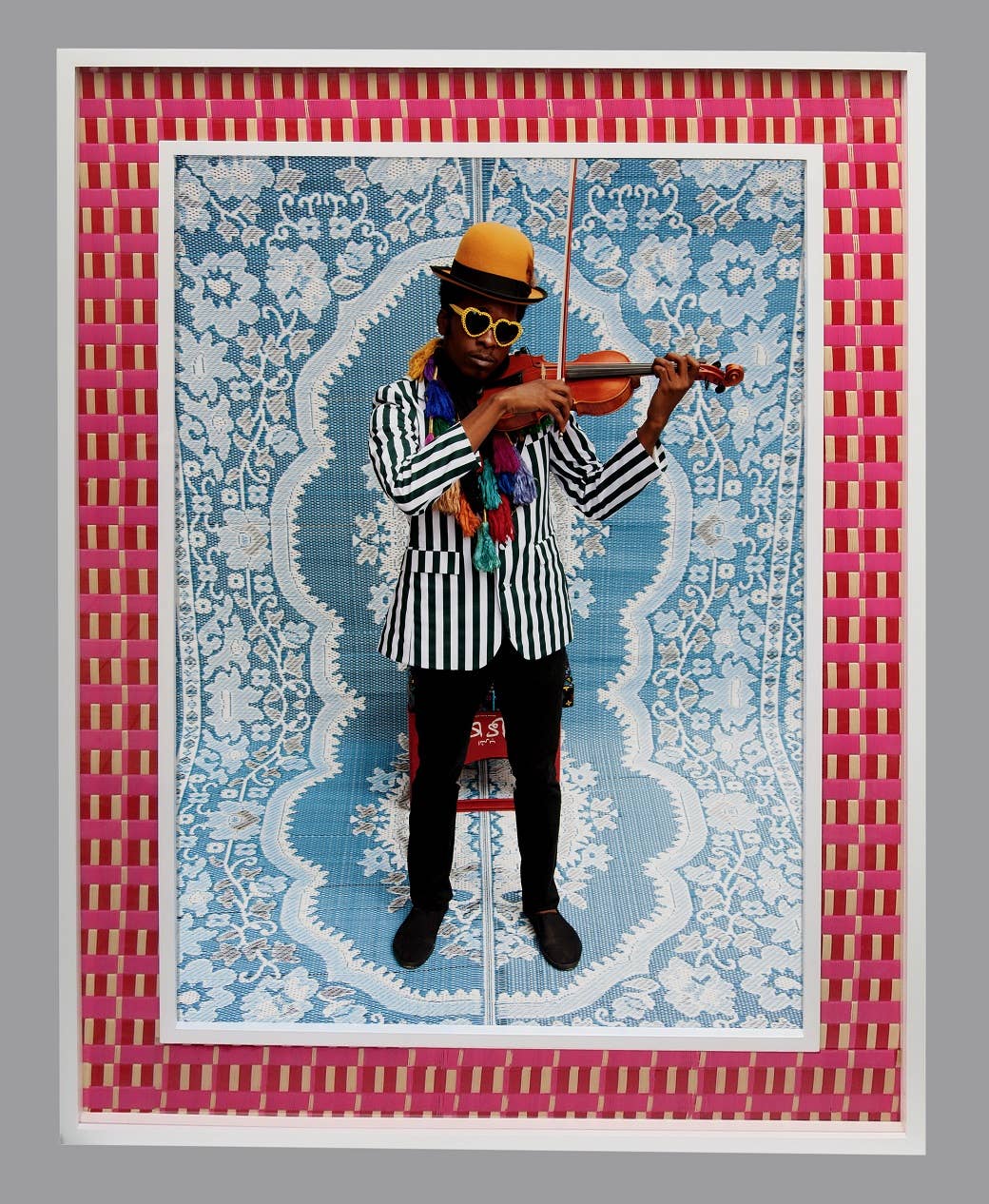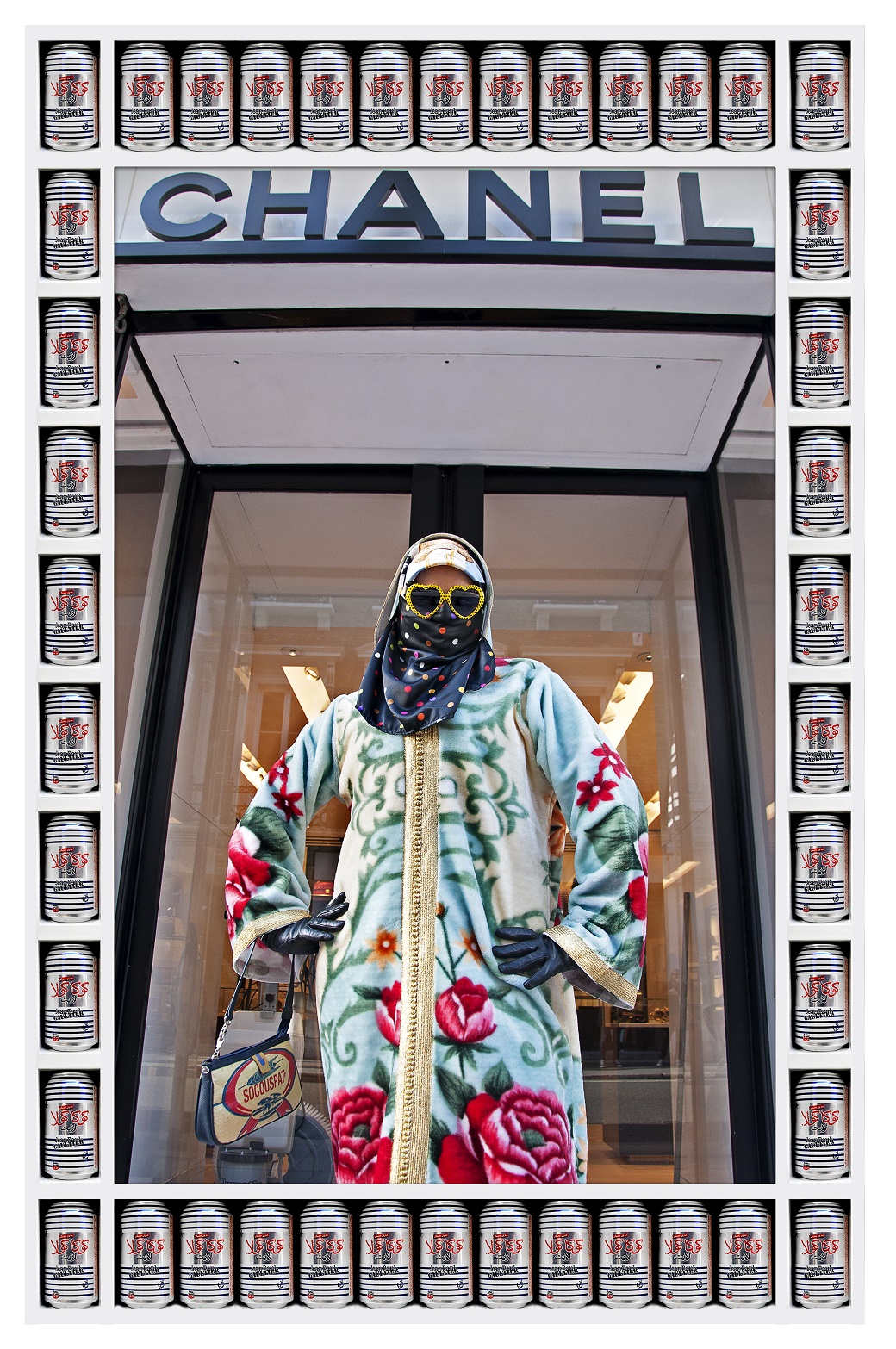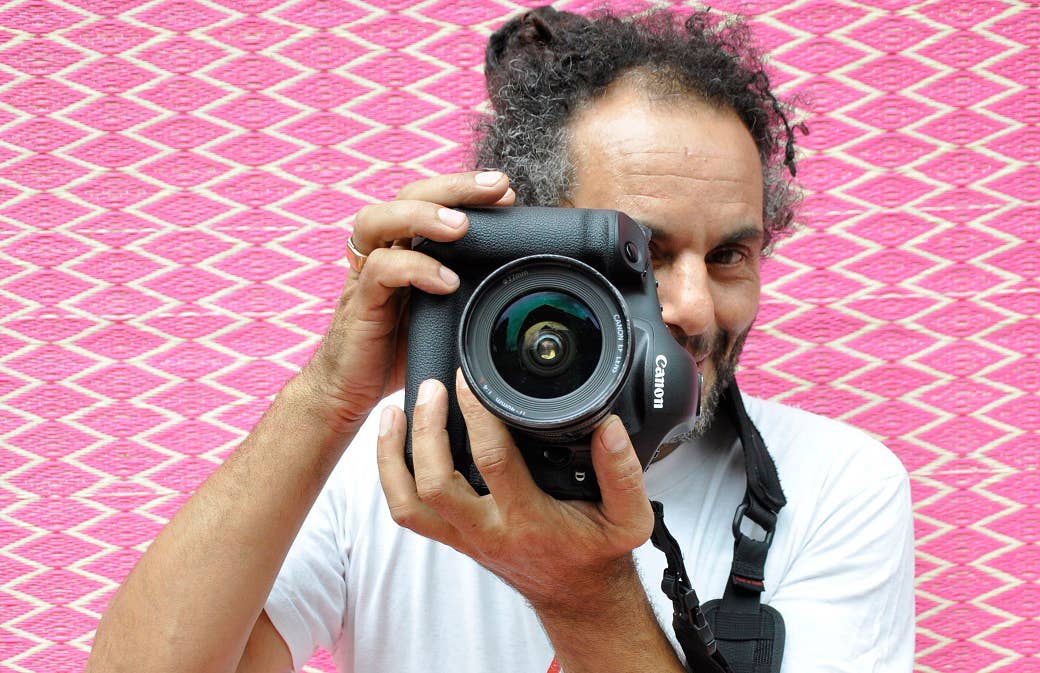
As you may well be aware by now, rum brand BACARDÍ recently teamed up with their Global Chief Creative for Culture Swizz Beatz and his art vehicle, The Dean Collection, to put on a series of art fairs across the world to showcase artists’ work and sell it. The key difference between No Commission and most other art fairs is that in this case, the artist keeps 100% of the money made—hence, No Commission. It’s a pretty progressive move for any brand, but not a surprising one when you consider BACARDÍ’s history of patronage that goes back almost to day one of the brand’s life. Since the 30's the Bacardi family have had a keen interest in art, architecture and music commissioning work from Brazilian artist Francisco Brennand to Cuban artist Felix Ramos and even hosting Prohibition parties in Cuba. Now, in 2016, they're continuing that tradition of supporting the arts with cultural initiatives such as No Commission, collaborating on an installations with digital artist Kenzo Digital, and hosting massive block parties such as the Major Lazer show in Jamaica.
We caught up with Morocco-born, UK-based artist Hassan Hajjaj, one of the artists whose work will be on show at No Commission London, to discuss his extraordinary body of work, the vast number of media he’s employed over the years, the bringing together of cultures that lies at the centre of most of his work, and of course, the BACARDÍ X The Dean Collection present No Commission project.
Despite being widely acclaimed and being held in very high esteem in the art world, there’s always been a bit of an outsider quality to Hassan Hajjaj. Having moved to England from Morocco at a young age, his work never quite fit convention and he refused to stick to one style, discipline or even medium. His work, that spans several decades, has over the years incorporated portraiture, fashion, furniture design, film, music videos. Despite that, Hajjaj never went to art school, nor did he receive any sort of formal training. Instead he’s entirely self-taught and, as he points out, has managed to avoid much of the snobbery that can sometimes face an artist wanting to work in a different way. This is most likely down to the inclusive way he approaches his own art.
Exhibitions like Kesh Angels and Rock Stars aimed to bring worlds together and upend perceptions. In the case of the former, Hajjaj photographed a motorcycle gang of young women in Marrakech and the vibrant street culture of Morocco, bringing these striking images to the West. In the case of the latter, he took the idea of the rock star—in his words, “long hair, leather jacket and sunglasses”—and brought to that a much wider range of people and handed them the name. Bridging gaps and breaking down cultural barriers is something he keeps coming back to, regardless of medium.

If someone had never seen your work, how would you describe it and what would you hope it would make them think or feel?
I think what I’m trying to do is create something that makes people feel good. I also want the work to be shared, and in the case of my installations, to be actually used. I want people to have an experience with them. So really I’m coming from a people’s people point of view with my work. I’m hoping everyone can enjoy my work, different types of people from different parts of the world. I suppose popular would be the word.
It’s funny you mention that, you’ve been described as the Andy Warhol of Marrakech. I was wondering what you thought of that.
That’s the press putting it that way. I find it funny but I always think when it’s something like that you become secondary because you’re from Morocco. It’s like a typecast to a certain degree, but for me, it’s a big compliment at the same time. He’s not someone who I followed. It wasn’t meant to be that way. It’s just because I use a lot of products and objects in a different way. It’s obviously closer to that sort of work but it’s just this thing that’s been passed on and on with the press.
We’ve touched on some of the different media you use. How does the medium affect your work and the process?
Well, I don’t come from an art background, I didn’t study art, so I had nothing to lose. All of the things we said and all the different ways I’ve worked come from the history of what I’ve done in the past. I’ve done fashion boutiques, shows, I’ve designed, I’ve done a label, I’ve done music videos, magazine photoshoots, I’ve put on bands, I used to put on club nights with DJs… all of that comes out in my work. Also, it’s very hard when you’re an artist sometimes. If you’re a painter it can be hard to do something else like music, for example. You might not get taken seriously. Even if they knew and liked your work as a painter, they might not like your music or your acting. So I’ve been very lucky to get away with this many things in the art world. I’m sure there’s still a lot of that snobbery somewhere but I’m avoiding it.
"I hope the work shows that people are the same everywhere, striving for the same things"
Cultural identity is a recurring theme in your work. Is it viewed differently by people from different countries or from backgrounds?
Well I was born and grew up in Morocco, so there’s that contribution, but I’m a Londoner too. So I’ve worked in a lot of different ways with a lot of different people. All that’s given me the eye for what I do. If I was doing what I do somewhere else it probably would be an entirely different body of work. I’m really lucky to have had such huge support from my home country and from north Africa, the so-called Arab and Middle Eastern countries. That’s really important to me doing this kind of work that it gets enjoyed by them. It depends how people see it. Some people see it as exotic, you know. From a Western point of view, they have a different way of viewing that body of work. And obviously, there’s the media in the West and what they get from it.
You moved to London when you were quite young. What was it like seeing London for the first time? What were your thoughts?
[laughs] It was like watching everything on a black and white TV. Everything was grey. I didn’t speak the language, either. To be honest, it was a completely different place to the way is now. It was a very difficult time, that first year. I didn’t speak English and I didn’t fit in. Obviously coming from Morocco where it’s bright, sunny and colourful all the time, it was very, very different. Two completely different cultures, different landscapes, different language, different food. But as a kid, you just get on with it. After a year and a half I’d learned the language and settled in pretty well. Now, it’s a global city like everywhere else so I’m not sure how that transition would be if I moved over there now.

We’ve mentioned your portraiture, you’ve featured a lot of different people from different walks of life, particularly in works like Rock Stars. How do you find the people that you photograph?
Well, if you’re talking about a certain body of work, it’s to do with having grown up in London. I was one of those people who moved around from one country to another. Each time I had to find my way in a new culture, a new city. A lot of the friends that I made back in the ‘70s and early ‘80s have similar journeys. So by the ‘80s we found ourselves creating our own backdrop and our own spaces. We had our own clubs, made our own fashion. So this was a product of London. These images came out of growing up around photographers, athletes, filmmakers, artists, fashion designers from different parts of the globe. For me, it was important to document these people. I’m just the camera person but I’m also one of those people that’s had a similar journey so I identify with the same things. That’s where that came from.
Do you find when you’re doing these portraits, do you go out with a specific narrative in mind or is that informed by what you find when you begin taking pictures?
Well… with Rock Stars, they’re my rock stars on a professional level. When you say the words ‘rock stars’, normally it means long hair, leather jacket and sunglasses. That’s what people think when they hear those words. For me, it’s telling the story of the underdog. It’s also someone who makes something out of nothing. Sometimes I’ll design something from a very cheap fabric and make it more glamorous. The idea is really trying to present these people, the underdogs, who are striving and have talent and passion. That’s something I’m really interested in. This is something I’m working on, making sure that I’m presenting these people well.
Do you think your work has helped cultural understanding and breaking down the barriers?
I hope so, because it’s about people. I hope the work shows that people are the same everywhere, striving for the same things. I’m hoping that this No Commission project is part of it as well. It’s about documenting. It’s about taking something from the past and making it future.
"If I was shooting another body of work like 'Rock Stars', Swizz would be one of them"
How did you get involved with the BACARDÍ X The Dean Collection present No Commission?
About two or three years ago, Swizz discovered my work. I got a call to say that he wanted to hang out and I thought it would be cool to meet him. So we met, hung out and vibed for a few hours, talked about everything and he then bought a few pieces of my work. Then when he was coming round to doing a new No Commission he approached me, said would I do it. I obviously said yes because I love what he does and really wanted to support him with what he’s doing right now. And we took it from there.
What’s it been like working with Swizz? What’s he like?
For me, it’s been absolutely lovely. Obviously we don’t speak all the time but when we do he always has time for me, we get on great. I think if I was shooting another body of work like another Rock Stars, he’d be one of them. He’s made something out of nothing but he’s also a giver which is very important. Yeah, he’s been a pleasure to work with.
Do you think this concept could grow beyond the BACARDÍ X The Dean Collection present No Commission project and become a more widely accepted way of selling art?
Well, I don’t think it’s going to happen just yet in the art world, but it’s a good start. I’m not sure how it would work as a business model without all the galleries closing down but it’s a very good start. If there are more events, the better. What makes it so different and such a great thing to be a part of is firstly, it’s about supporting artists, about appreciating each other. Secondly, it’s about artists helping other artists to push their work and get 100% payment. Also, it’s doing great things for art. Not just street art, but contemporary as well. All this kind of stuff is amazing. That’s what makes it so different from everything else. Also, it’s bridging the gaps between all these different types of art: music, visual art, fashion of course. So it definitely comes from a different point of view in that respect. That’s why I wanted to work with BACARDÍ and Swizz Beatz because they’re coming at it differently.
The Dean Collection X BACARDÍ present No Commission: London 8-10 December 2016 at The Arches in Southwark, London (Ewer Street entrance, SE1 0NR, off Union St.). Tickets are free but limited. Head to here for more info. Visitors must be 18 years of age or older.

